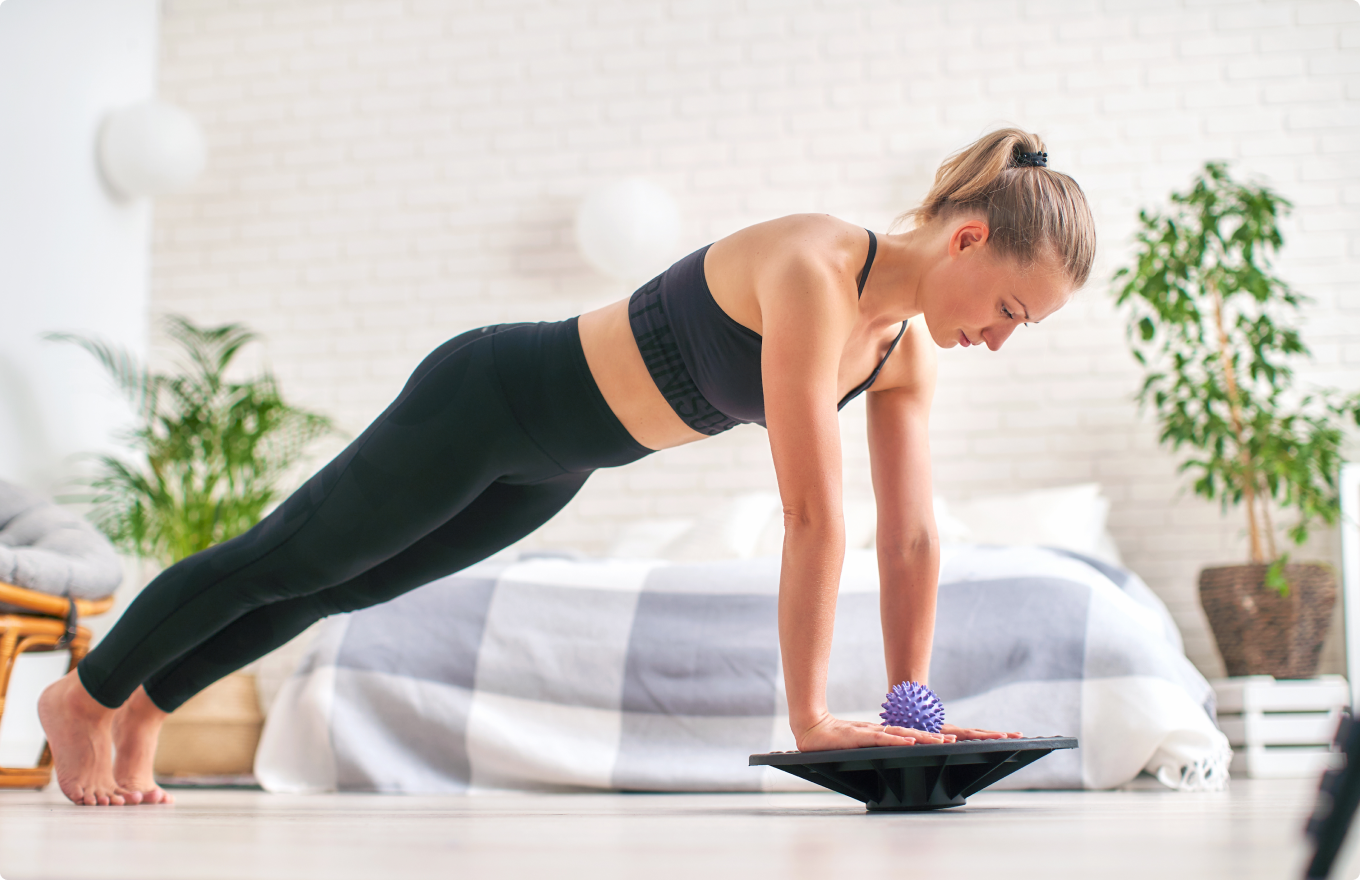In the clinic there are numerous tests we can use to test your balance. However, in order to differentiate which of your balance systems are not functioning correctly we most often use the M-CTSIB, the Modified Clinical Test of Sensory Interaction in Balance (1). This test measures your balance on 2 surfaces with your eyes both open and closed. In the unmodified version (CTSIB), there is a dome used to provide a visual conflict; this shows whether or not you can intentionally override your vision and use your vestibular system intentionally. However, for most purposes, and ours here, using the modified version is great. Let’s go through how to test yourself if, and when, you find it necessary. Remember to always be as safe as possible when performing this test. I would recommend doing this test with another person nearby and to do it near your countertop or a sturdy chair.
To perform this test you will need a solid surface to stand on, like hardwood or tile floor, and an uneven surface, like balance foam or a couch cushion. You must stand with your feet touching (as close as you can get them) and your arms at your sides, throughout the duration of the test periods.
There are 4 conditions:
- Firm, eyes open
- Firm, eyes closed
- Foam, eyes open
- Foam, eyes closed
For each of the four conditions, you may have three attempts. The time begins when you are set in position, and ends when you complete 30 consecutive seconds or make a mistake. Mistakes include: opening your eyes in a closed condition, taking a step, moving your arms from your sides, or needing assistance to prevent a fall (1). If you, the testee, are able to complete the first round without a mistake, move to the next condition and do not repeat all 3 attempts.
Some sway at the ankles and/or hips, called ankle strategy or hip strategy, respectively, is normal. But, this test shows us which is most difficult for you; the condition that is most difficult is the condition you should work on most in PT. Let’s work through what your test results mean when you finish the test.
Condition 1) while standing in this position, all of your systems are available for balance, but your base of support (BOS) is significantly smaller than you would usually stand. BOS consists of the parts of your body touching the floor beneath you; when it is larger, it is easier to stand, and the smaller it is the more difficult it is to stand (2).
Condition 2) you are able to use your proprioceptive and vestibular systems in this condition. However, you are unable to use your visual system. This tells us that you are very dependent on your vision, and without it you are at an increased risk for falling in situations when you have decreased light, or no vision at all.
Condition 3) in this condition, you are able to use vision and your vestibular system, but it challenges your proprioception significantly. If you have trouble here, it is a sign to work on proprioceptive and dynamic balance in physical therapy.
Condition 4) here, you are mainly able to use your vestibular system to balance. Individuals have most difficulty in this position if they have vestibular dysfunction, and this is frequently something we treat in vestibular therapy.
Fortunately, almost all of the reasons you are experiencing imbalance can be treated in physical therapy. Finding what is difficult for you, and then slowly working on it will improve your balance, reduce your risk of falling, and improve your confidence with your balance!
Sources:
(1) Wrisley, D. (n.d.). Clinical Test of Sensory Interaction on Balance. Retrieved September 07, 2020, from https://www.sralab.org/rehabilitation-measures/clinical-test-sensory-interaction-balance-vedge
(2) Physiopedia. (n.d.). Base of Support. Retrieved September 07, 2020, from https://www.physio-pedia.com/Base_of_Support






